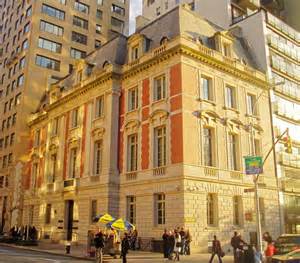Oct 5 2023 - Jan 15 2024
New York City, NY
“Max Beckmann: The Formative Years, 1915-1925” focuses on the shift that occurred in Beckmann’s work during a crucial decade. Presented at Neue Galerie New York, this exhibition will feature approximately 100 works by the artist, comprising major paintings, drawings, and significant print portfolios, many on loan from museums and private collections in Europe and the United States. It will offer an unprecedented focus on this ten-year period, when the artist’s style moved away from his Impressionistic origins to the verist style of the Neue Sachlichkeit (New Objectivity) that defined his later work, although he later distanced himself from this term and favored “transcendent objectivity” instead.
The dramatic shift in his approach can be traced back to his involvement in World War I. With the outbreak of hostilities, Beckmann spent time in East Prussia as a volunteer nurse in 1914. He was profoundly affected by his experience in the combat, even though his involvement was short-lived. In October 1914, in a letter to his wife Minna Beckmann-Tube, he wrote: “…my will to live is for the moment stronger than ever, even though I have already experienced dreadful things and died myself with them several times. Yet the more one dies, the more intensely one lives. I have been drawing, that protects one from death and danger.” The following year, he served as a medical orderly in Belgium. In July 1915, he suffered a nervous breakdown and was discharged from service in 1917.
Beckmann moved to Frankfurt to recover and his work changed as a result of the war. The painterly and romantic compositions of the pre-war years were replaced with more angular forms. His palette became darker and his use of paint more subdued. His subject matter evolved from history painting to embrace more contemporary subjects, sometimes viewed through a biblical lens. In September 1918, he wrote a short text entitled “Creative Credo,” where he defined his position in the current difficult times and indicated his intention to “be a part of all the misery that is coming.” But he also expressed a love for humanity, for “its meanness, its banality, its dullness, its cheap contentment, and its oh-so-very-rare heroism.” Beckmann’s post-war subjects were often more violent as he confronted political intolerance and exposed poverty and social injustice. He developed a new approach to art, and one that helped him to process painful memories and that acknowledged recent artistic developments that he had previously criticized.
The exhibition will cover key topics: Portraiture and the Self-Portrait, Religious Paintings, Allegory, Still-Lifes, Landscapes, and Social Life in early Weimar Germany. Between 1917 and 1925, he became one of the most admired practitioners of representational painting. This status is confirmed by the prominent representation of Beckmann’s work in the 1925 “Neue Sachlichkeit” exhibition in Mannheim, which serves as the endpoint of this presentation and underscores the focus on the years 1915 to 1925. Our exhibition offers a unique opportunity to experience and understand the evolution of Beckmann’s mature art through a close reading.
Credit: Overview from museum website
Exhibition Venues & Dates
Oct 5 2023 - Jan 15 2024
New York City, NY
